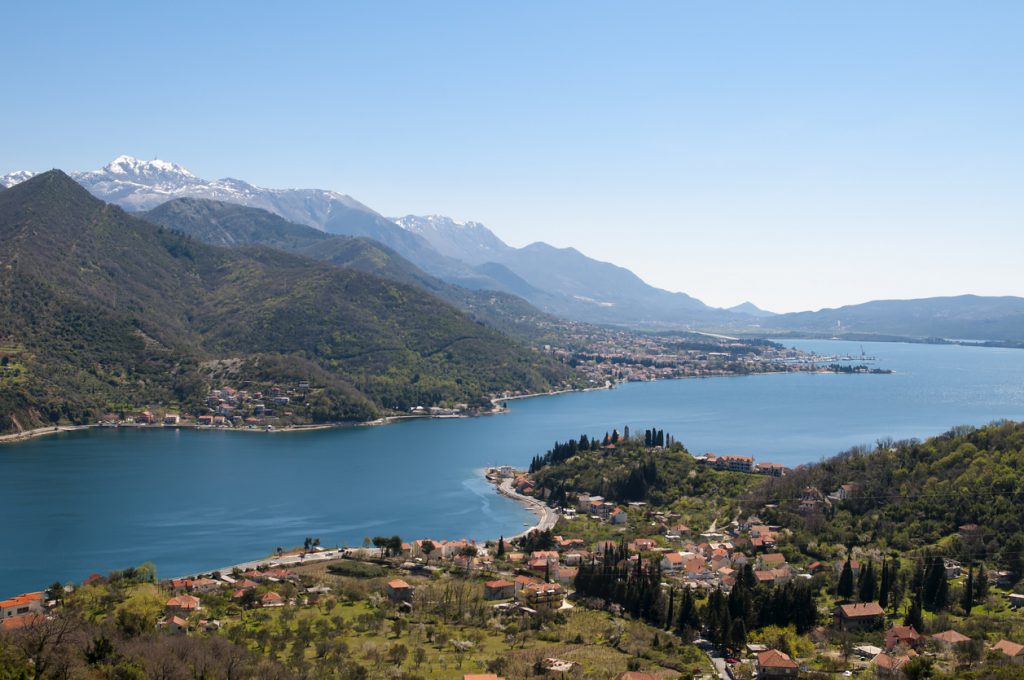Podgorica

Podgorica, the capital of Montenegro, is also the nation’s largest city, as well as a showcase for the country’s hundreds of years of history. Podgorica highlights the cultural texture of Montenegro, offering sites such as the Clock Tower, the Millennium Bridge, the Nikola Statue, the Osmanagic Mosque, the Doganjska Mosque and Ribnica Castle. Passing through the city are the Moraca and Ribnica rivers, with picturesque riverfront pathways.
Budva

Budva, known as the Miami of Montenegro, attracts visitors with its long beaches, historical texture and vibrant nightlife. Budva is split into two areas; its Old City has a 2,500-year history, with locales such as the Citadel, Santa Marija Church, St. Sava Church and the Marina. Sveti Stefan Island, a former fishing village, is now the site of a luxury resort but the beaches in the north and south of the region are still open to the public. Just 40 km from Budva is the town of Bar, offering historical and natural beauties, while Petrovac and Tara Canyon are among the sights within a 90-minute drive from the city.
Kotor

Kotor is another destination renowned for its seaside. Surrounded by mountains and bays, Kotor has the one of the Adriatic Sea’s most famous shores. Visitors to Kotor, which is on the UNESCO World Cultural Heritage List, can see the Tara River, the Austro-Hungarian Forests, the Bay of Kotor, Kotor Palace, the Old Kotor Prison, Marika Church, Sveti Trifun Cathedral, Perast Town, Kotor Castle and the Maritime Museum.
Cetinje

Set in a green valley surrounded by majestic mountains, Cetinje draws attention with splendid mansions and quaint single-story houses. Also known as the Royal Capital, Cetinje hosts the country’s most impressive museum collections. The Lipa Cave, Cetinje Monastery, Biljarda and the History Museum are among the top places to visit in Cetinje.
Tivat

The city of Tivat is in the center of the Bay of Kotor, namely Boka Bay. Tivat draws attention with its natural beauties and scenic location. Places of interest in Tivat include Porto Montenegro, the vineyard house Ljetnjikovac Buca, the small village Gornja Lastva, and the expansive City Park. You can explore this fun and beautiful coastal city by buying a flights to Tivat right away!
Ulcinj

Ulcinj, another coastal city, offers interesting historical sites such as Slave Square, the Old Town, Balsic Castle, Ada Bojana, Lake Saska, Valdanos Bay, and the Pasha Mosque.
Montenegro Beaches

The best swimming beaches in Montenegro are in Budva and Kotor, and include Sveti Stefan, Sveti Nikola Island, Jaz, Ploce, Mogren, Slovenska, Becici, Kraljicina, Öliocer, Kamenovo and Przno.
What to eat in Montenegro

Most of the restaurants in coastal areas focus on seafood; in the mountainous regions, visitors will find more meat and yoghurt dishes. Cevapi, boiled kid, papara, razny, a spicy kebab with onions, and njegushka chetinyska prshuta are some specialties of Montenegro.
When to go to Montenegro?

Montenegro’s Mediterranean climate features hot, dry summers. The best time to swim in the sea and enjoy the country’s beaches is between May and September.

